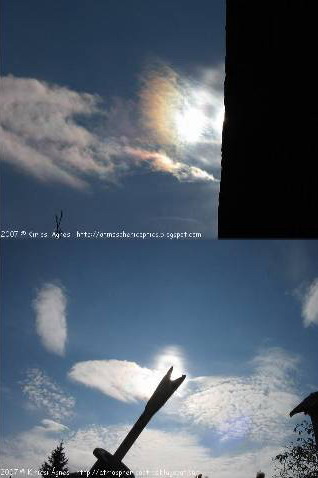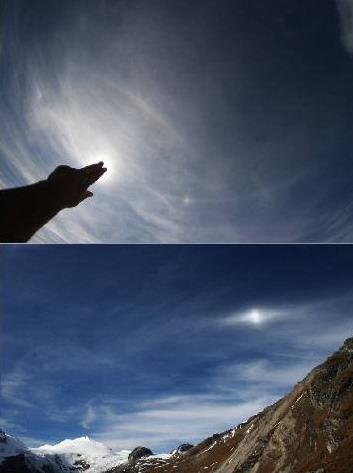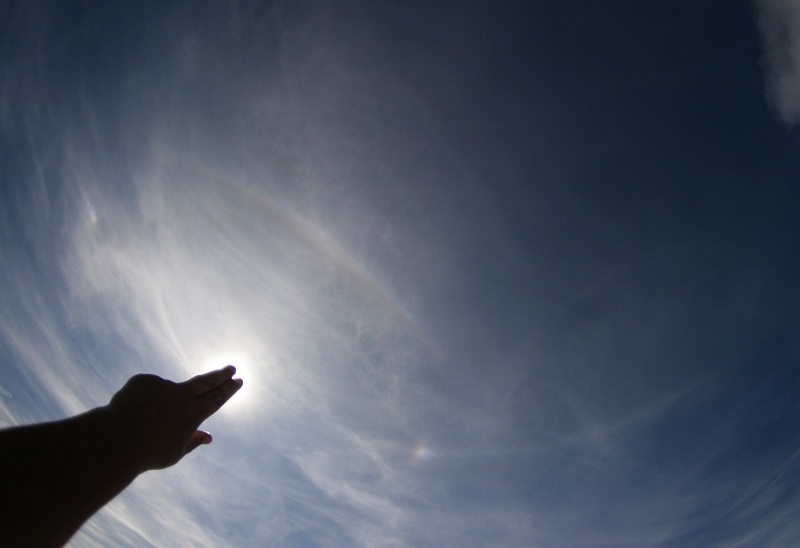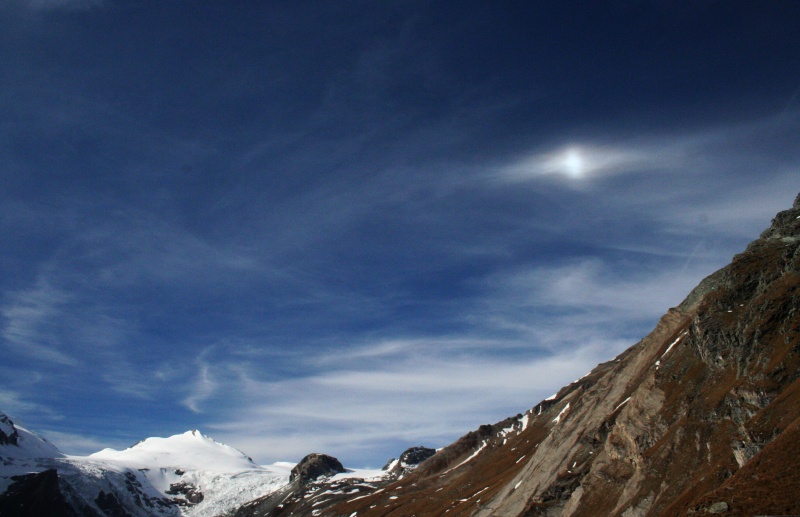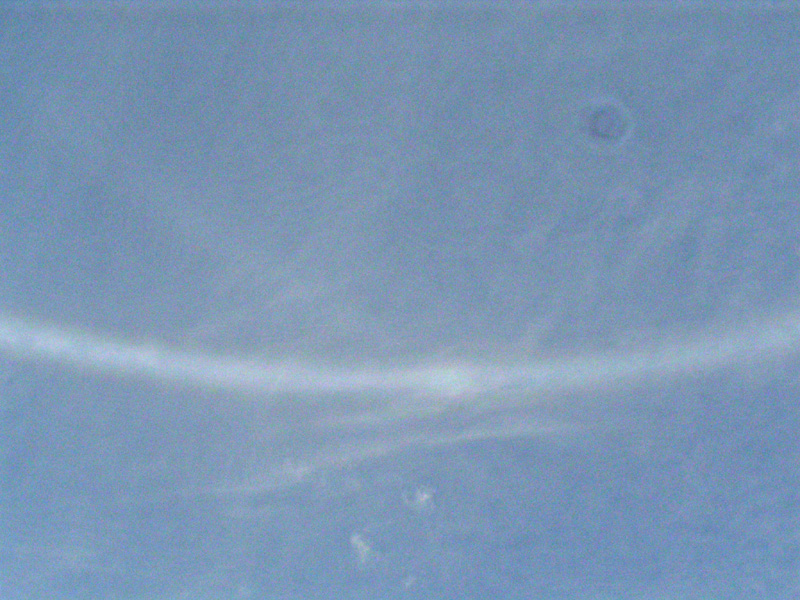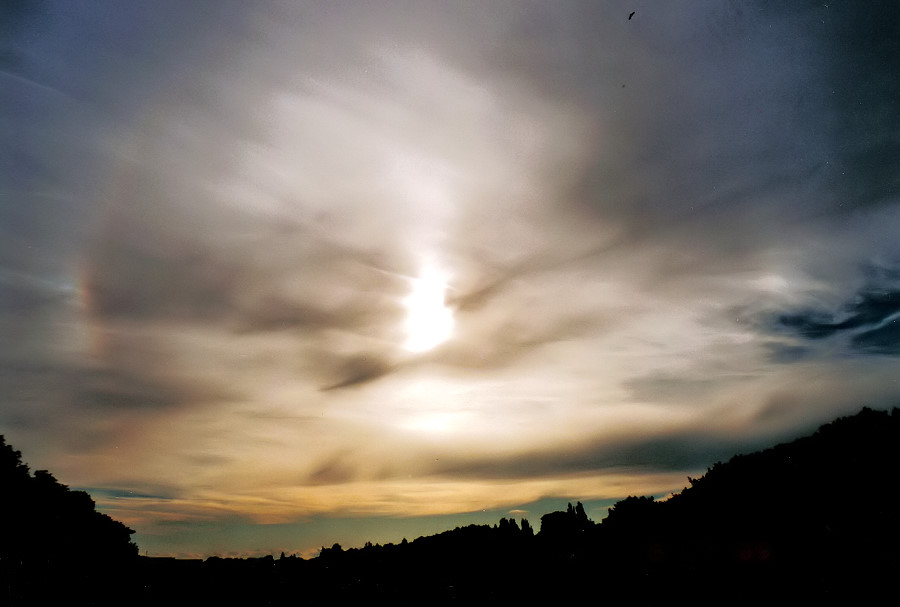On October 9, 2007, my husband and I made a trip to Austria to visit the highest mountain of that country, Mt. Großglockner, 3798m (
1 ). The main ridge of the alps gave a warm welcome to us with a bright and diffuse fragment of the infralateral arc (
2 ). Just a little later, at a sun elevation of 33.4°, a sharply defined Parry arc (
3 ) formed directly above the upper tangent arc. There were only few occasions that we saw it in such a brightness before. The beautiful halo display was completed by sundogs (
4 ) and an almost complete parhelic circle (
5 -
6 ). Even the heliac arc seemed to be present, as we both recognized it. The cirrus clouds, however, showed a very striated structure, so it cannot clearly be identified in our photographs.
In the afternoon, at a sun elevation of 30.9°, a fragment of the parhelic circle appeared in a narrow cirrus fiber together with a bright 120°-sundog. This sundog not only had a greenish and reddish rim (
7 ), but also showed a striking vertical extension from time to time. Below it there seemed to be kind of cross-formed arcs (
8 ) like those which normally appear around the anthelion only.
Text: Claudia Hinz


